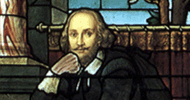

 |
 |
| Authorship | The Playhouse in Printing House | Publishers, Printers, and the Printed Book | ||||||||||||
| The Playhouse in Printing House | |||
| Theater Attributions on Title Pages | ||
|
As the status of plays grew in the early seventeenth century, they were no longer seen as "baggage bookes" and instead came to be seen as literature. Ben Jonson's Workes (1616), for instance, included his poetry along with nine plays originally performed on the professional stage, a combination that implied plays could be literature and part of an author's works. The rise in author attributions on play title pages was part of this change, as plays came to be deemed the products of single individuals, not of collaborative theater companies. But the emergence of authors on title pages did not cause the theatrical origins of printed plays to be suppressed. That is, although plays were marketed as the works of individual authors, that did not preclude emphasizing their ties to the professional theater. Indeed, those ties to the theater were increasingly highlighted in printed plays. Throughout the early seventeenth century, company attributions on title pages remained relatively steady, but London theaters were named on title pages more and more frequently. Unlike company attributions, attributions of theaters named specific theatrical venues within London's social geography, venues that incorporated not only professional players but audiences of men and women of varying social classes, who paid graduated admission prices to enter. Theater attributions could register oppositions in playing space (indoor and outdoor), geography (center and margins), and status (high and low), oppositions that company attributions could not embody. Theater attributions, though, were just one aspect of theatricality highlighted
in printed plays. Woodcuts from scenes in plays were added to title pages; lists
of characters and players were inserted in the preliminaries to printed plays;
and songs were foregrounded through certain typographical layouts. The following
sections discuss these issues and show how intertwined the playhouse and the
printing house were in early modern printed plays. |
Images: Columbia
Rare Book & Manuscript Library
Technology: Columbia Center for New
Media Teaching & Learning